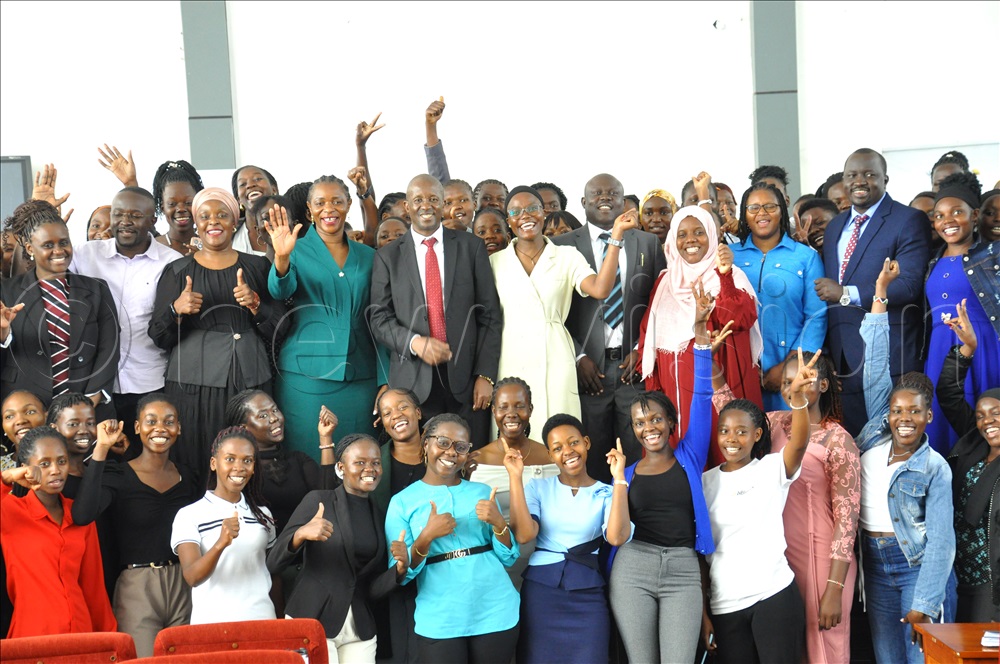Makerere University Business School introduces vocational training requirement
“We want our students to have a range of practical skills they can rely on beyond graduation. Competitiveness is key.”
Moses Muhwezi Principal MUBS ICT addressing participants during the digital skilling training for women at National ICT innovation Hub on July 15, 2025. (Photos by Nancy Nanyonga)
________________
Makerere University Business School (MUBS) has announced a new requirement that will see all undergraduate students undertake a vocational course alongside their academic degree, in a move aimed at boosting employability and addressing Uganda’s youth unemployment crisis.
The initiative, dubbed “BCom Plus One”, was unveiled on Tuesday by MUBS principal Dr Moses Muhwezi during the launch of the Entrepreneurship Digital Skills for Employment of Women (EDEW) programme at the National ICT Innovation Hub in Kampala.
“At the Business School, we are introducing BCom Plus One. You will come for a Bachelor of Commerce, but before you graduate, you must complete an additional skill-based course, such as branding, electrical installation, DJing, or carpentry,” Muhwezi said.
“We want our students to have a range of practical skills they can rely on beyond graduation. Competitiveness is key.”
The new requirement is part of broader efforts to respond to rising unemployment and equip graduates with practical, income-generating skills.
Career direction lacking
Muhwezi emphasised that many young people lack clear career direction and are not adequately prepared for the job market.
“There is a worrying trend where young people don't plan or know what they want. When you're focused and competitive, opportunities will find you,” he said.
The announcement came during the launch of the EDEW programme, an initiative designed to tackle the twin challenges of graduate unemployment and the lack of job-creation capacity, particularly among young women.
Uganda's unemployment crisis
A report by the National Planning Authority (NPA) reveals that despite the Ugandan economy generating 1.6 million jobs between 2016 and 2021, youth unemployment rose from 13% in 2016/17 to 16% in 2020/21.

The most affected demographic are the so-called NEETs: Youth not in education, employment, or training, whose numbers have surged from 2.5 million in 2012/13 to 4.2 million in the 2022/23 financial year. If current trends persist, the number is projected to rise to 5.8 million by 2030/31, the report warns.
Regionally, the highest concentrations of NEETs are found in Bukedi (61.4%), Lango (49.3%), Elgon (44.1%), Busoga (43.5%), Bunyoro (42.5%), and Kigezi (42.1%).
The report attributes the trend largely to the economic disruptions caused by the COVID-19 pandemic, which led to mass layoffs and slowed economic growth.
In a related report, NPA noted that about 700,000 youth enter the Ugandan job market annually, yet only around 238,000 are absorbed, leaving a significant number unemployed or underemployed.
Lifeline for youth
Speaking at the launch of the EDEW programme, information ministry permanent secretary Dr Aminah Zawedde said the initiative aims to turn digital familiarity into employable skills.
“Many of our young people are active on social media and have access to digital tools. However, they’re not using these tools to create employment opportunities. This programme is designed to change that,” she said.
Zawedde noted that the training covers both technical and soft skills critical for success in the digital economy, including content creation, cybersecurity, data analytics, social media management, and entrepreneurship.
“The goal is to help young women convert their digital fluency into innovation and job creation,” she said.
The three-month programme, implemented by the Ministry of ICT in collaboration with MUBS and supported by the European Union, is expected to yield at least 10 supported startup ideas, with five fully incubated by the end of the pilot phase.